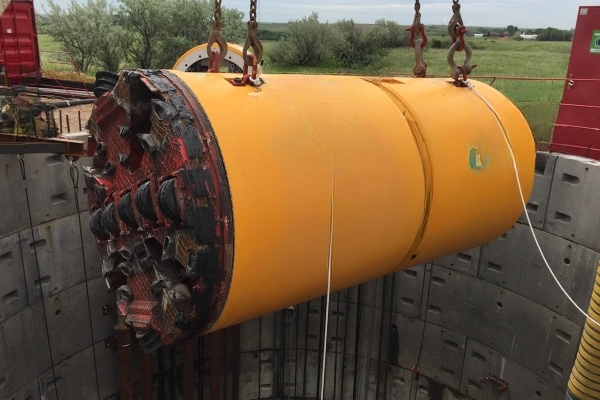Table of Contents
What Is Microtunneling?
Microtunnelling is a method of constructing small diameter tunnels underground without the need for traditional excavation techniques.

This method is particularly useful for installing pipelines in areas that are sensitive to disruption, such as highways, railroads and other busy locations. It offers a precise and efficient method of installation in a variety of ground conditions.
The main applications of microtunnelling include the construction of sewerage, water supply and communication and power networks.
Due to the small diameter of these tunnels, it is not practical for an operator to be present inside the tunnel during construction. Instead, a remotely controlled microtunnel boring machine (MTBM) is used in combination with the pipe jack-and-bore method.
The pipe jack-and-bore method involves lining the tunnel bore, which is formed by the MTBM, by pushing specially designed jacking pipes into the tunnel from one shaft to another. This allows for the construction of the tunnel without the need for a large excavation site on the surface.
Process Of Microtunneling
The process of microtunneling involves pushing pipes behind a machine, known as the microtunnel boring machine (MTBM), as it advances through the ground. This is done by launching the machine through an entry eye and using a pipe jacking process to push the pipes behind it. The speed of advancement is limited by the rate at which the pipes can be inserted into the entry eye via the hydraulic rams in the jacking frame.
As the tunnel length increases, so does the friction of the ground around the pipes. To minimize this, over-cutting is used to create a gap between the inner edge of the tunnel and the outer edge of the liner. This gap is usually between half an inch and 1.5 inches and is filled with a lubricant, such as bentonite slurry, to prevent it from collapsing. The size of the gap may need to be adjusted based on the geology to prevent ground subsidence.
Pushing the machine and liner forward can require significant force, up to hundreds of tons. The jacking frame with its hydraulic rams generates these forces and the entrance shaft must be strong enough to support them.
Smaller jacks called “interjacks” may be used between sections of the tunnel liner to push them apart and increase the pushing force on the sections in front of them while preventing the sections behind them from sliding out.
Sum Up
Microtunnelling is a valuable technique that allows for the construction of small diameter tunnels in a precise and efficient manner while minimizing disruption to the surface. It is suitable for a wide range of applications, including sewerage, water supply and communication and power networks.
FAQS
What is Microtunnelling and Pipe Jacking System?
It is a method used to excavate smaller diameter tunnels using a steerable mini boring machine and a jacking system to push pipes through the ground.
What does the guidance system do in Microtunnelling?
A: It uses a laser beam device to transmit real-time feedback and projected position of the machine to the operator for precise excavation.
